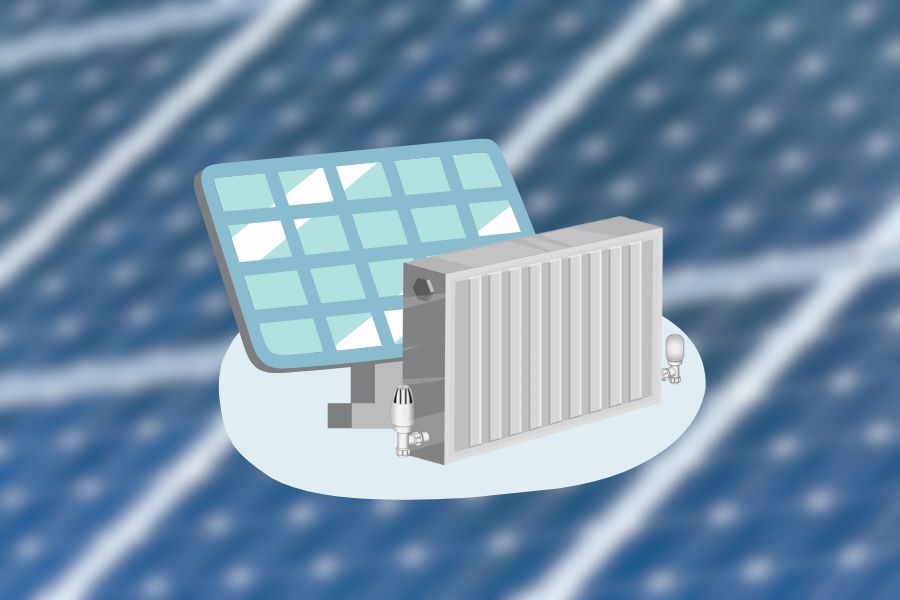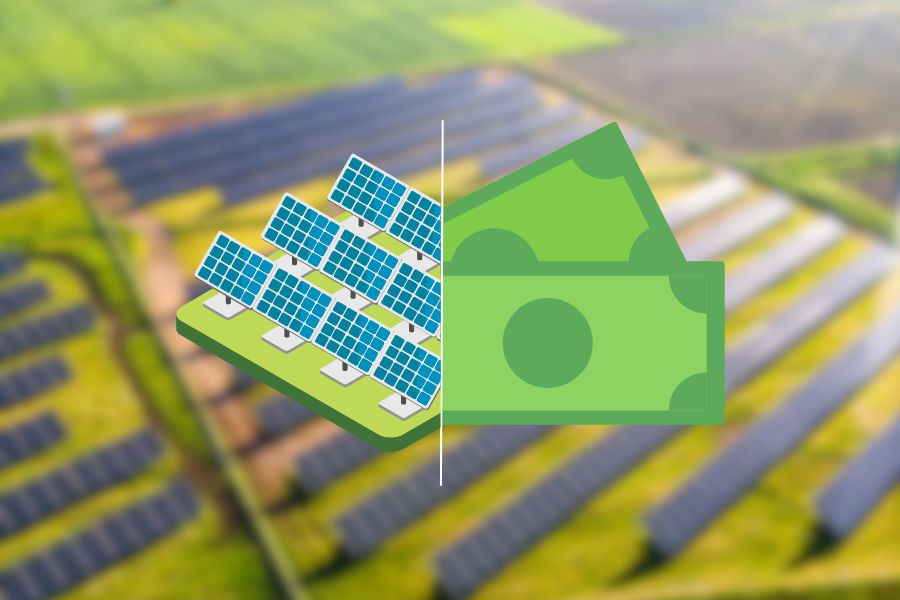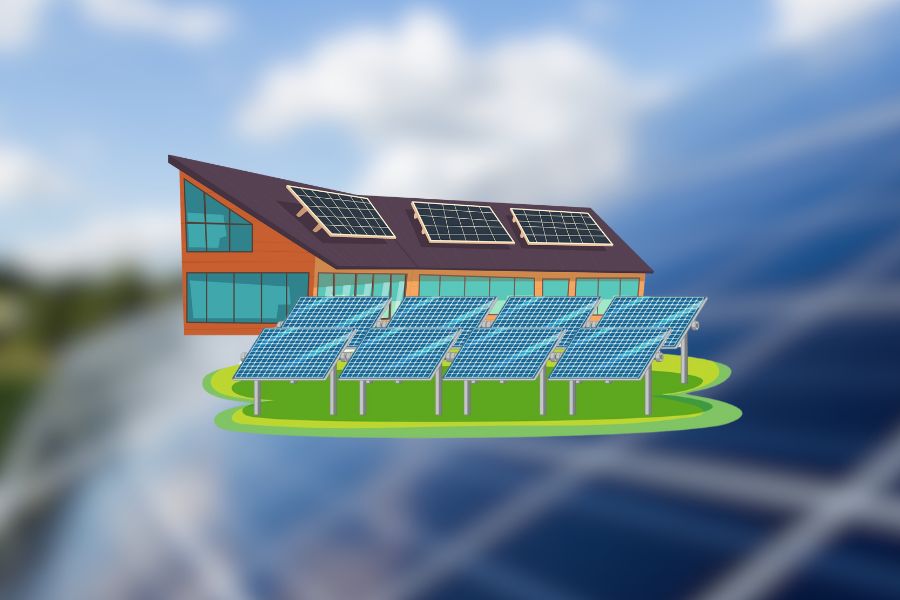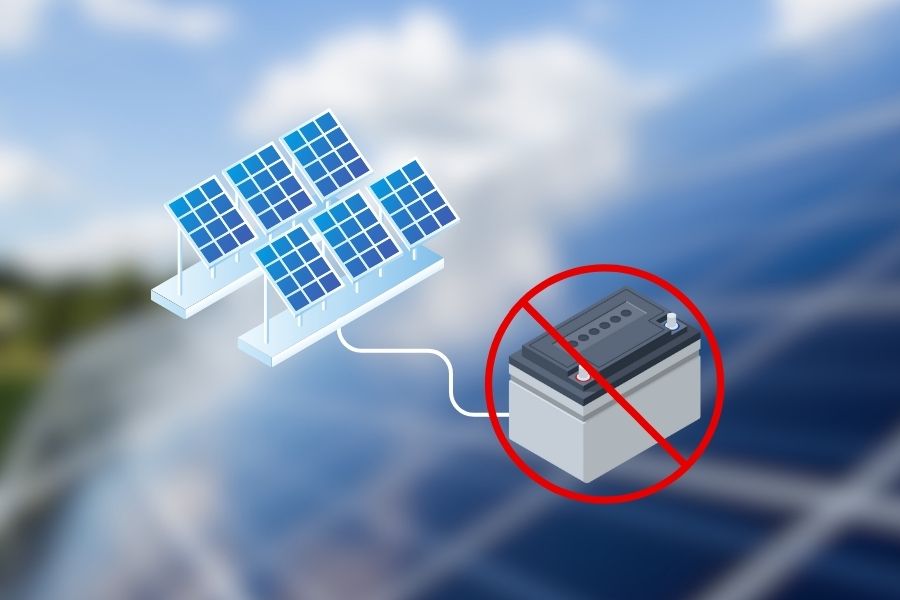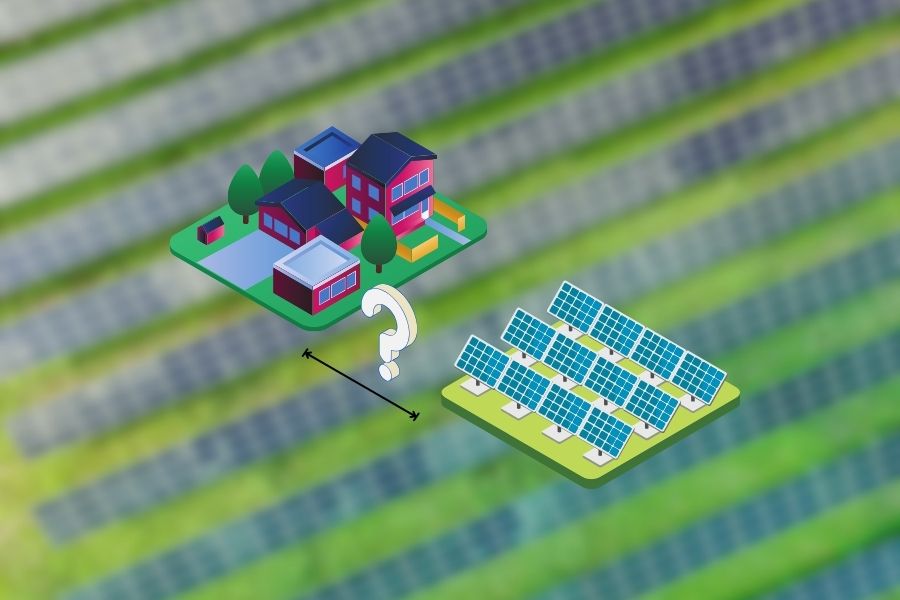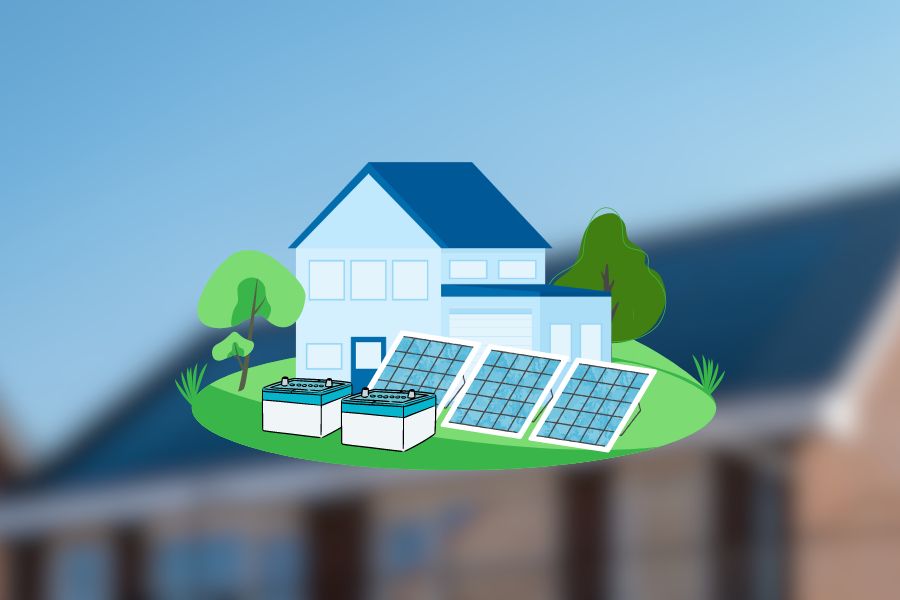Solar panels can indeed contribute to heating radiators. The absorbed solar energy gets transformed into heat through solar thermal panels. That heat helps warm water circulating within your home’s radiators. Solar panels can heat radiators, especially with efficient solar thermal collectors.
This innovative combination of renewable energy technology and traditional home heating can result in significant energy savings and efficient home electric appliance usage, offering a practical solution for homeowners seeking to harness the sun’s energy beyond generating electricity.
How Can Solar Panels Heat A Property?
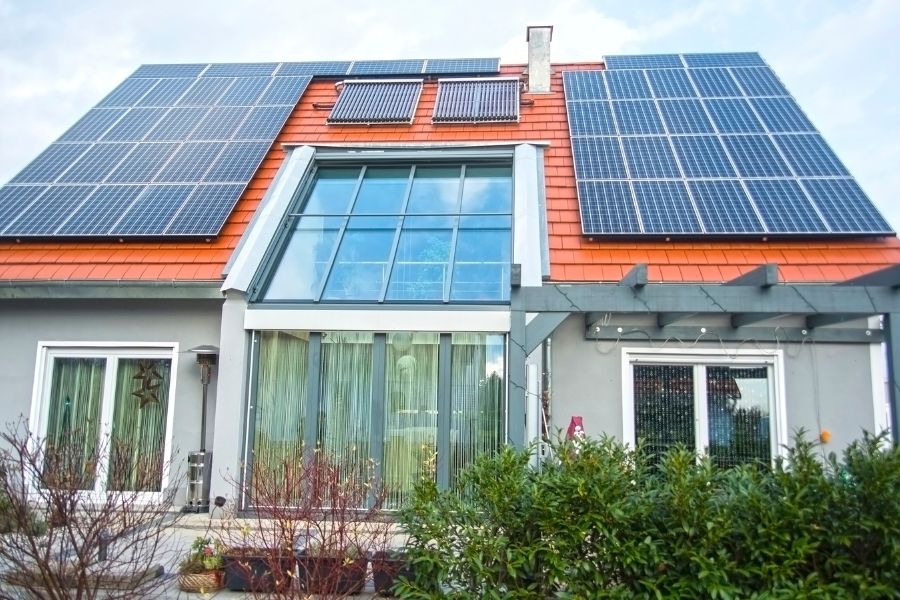
Solar panels can’t directly heat a property like a furnace or a radiator might, but they can be part of a system that does. There are two primary ways to use solar energy for electrical appliances and heat a property: solar thermal or solar photovoltaic (PV) systems.
Solar Thermal Systems
These can capture heat from the sun directly. They consist of solar thermal collectors which absorb sunlight and convert it into heat. Again, this heat then goes to a heat-transfer fluid like water or air, which can help heat your home directly or indirectly through a heat exchanger. There are two primary types of solar thermal systems:
- Active solar heating systems: Uses pumps and controllers to circulate the heated fluid through the building.
- Passive solar heating systems: These use natural convection currents to distribute heat. They rely on the design and materials of the building to collect, store, and distribute the heat.
Solar Photovoltaic (PV) systems
These are the solar panels that you’re most familiar with. They convert sunlight into electricity. Besides, you can use this electricity to power a traditional heating system (like an electric furnace or heat pump), effectively using solar power to heat your home. It’s a more indirect method, but it also has the advantage of providing power for other uses.
However, buildings can be designed or modified that allow them to take advantage of solar heat without any special equipment at all. People refer to that design as a passive solar panel design. Again, it might include features like:
- south-facing windows
- thermal mass to absorb and radiate heat
- overhangs or shades to control the amount of sunlight that enters the building
How Does a Radiator Heating System Work?
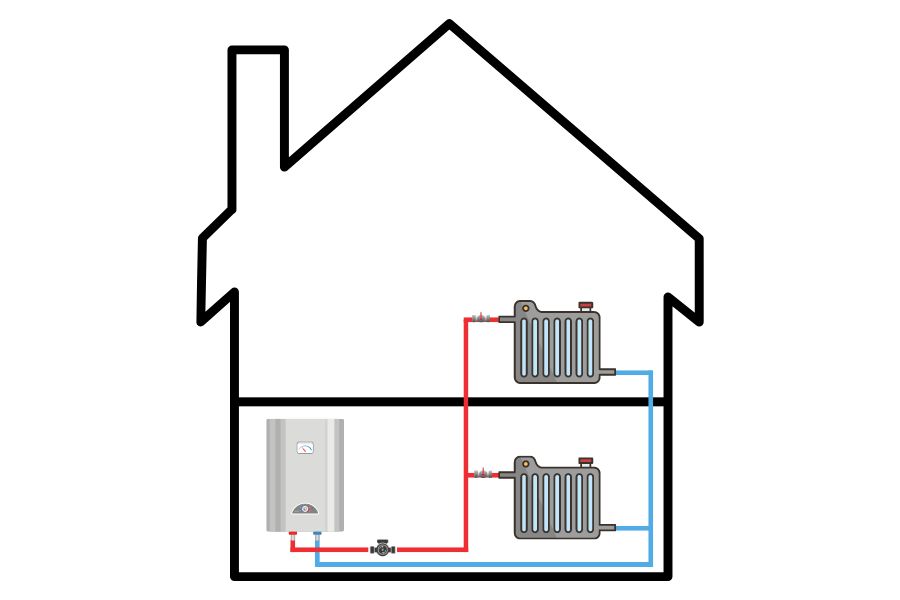
A radiator heating system is a type of central heating commonly found in older homes, though it still helps in some new constructions. It operates on a relatively simple principle: heat transfer via convection and radiation. Here’s a step-by-step explanation of how a radiator heating system works:
Heat Generation
The process begins with a boiler. Various sources like natural gas, oil, or electricity can power this boiler. When activated, the boiler heats water until it becomes steam or remains as hot water, depending on the type of system.
Heat Distribution
The steam or hot water then circulates through a series of pipes leading to the radiators situated throughout the property. If it’s a steam system, the steam rises naturally through the pipes due to the pressure difference. Besides, a pump helps to circulate the water if it’s a hot water system.
Heat Release
The radiators consist of metal, usually cast iron or steel, which are good conductors of heat. The hot water or steam transfers heat to the radiator’s metal, causing it to warm up.
Heat Convection and Radiation
The radiator then transfers this heat into the room. It does this in two ways:
- Radiation: Heat is radiated directly into the room, warming up any objects or people close to the radiator.
- Convection: The warm radiator heats the air around it, causing it to rise and circulate the room, while cooler air is drawn towards the radiator to be heated. It creates a convection current that distributes heat throughout the room.
Cooling and Recirculation
After releasing its heat, the cooled water or condensed steam (in the case of a steam system) returns to the boiler via a separate set of pipes to be reheated and start the process again.
This process continues until the room reaches the desired temperature, as controlled by a thermostat. When the room is warm enough, the thermostat signals the boiler to stop heating water, effectively turning off the heating system until more heat is needed.
Please note that while radiator heating systems can be effective, they do have some downsides. For instance, they can be less energy-efficient than other heating systems. Furthermore, because they involve circulating water through pipes, they can sometimes cause dampness or other problems if they leak. However, they also have advantages, such as providing comfortable, consistent heat.
Can Solar Panels Power Radiator Heating Systems?
Yes, solar panels can help to power radiator heating systems. Applying solar diverters could be beneficial for diverting excess power to the radiators. However, the feasibility and effectiveness of using solar panels for this purpose depend on several factors, including the size of the solar panel system, the energy requirements of the solar water heating system, and the climate conditions of the location.
Solar panels convert sunlight into electricity, which can help power various appliances and systems, including heating systems. Radiator heating systems typically use hot water or steam to heat a space, and a boiler usually generates the water or steam.
In a solar-powered radiator heating system, one can use the energy generated by the solar panels to operate the boiler and circulate the hot water or steam through the radiators.
To determine if solar panels can adequately power a radiator heating system, consider the heating system’s energy consumption. Also, compare it to the energy production of the solar panels. This assessment would involve factors such as:
- the size and efficiency of the solar panel system
- the available sunlight in the location
- the insulation and thermal efficiency of the building
In some cases, it may be necessary to supplement solar power with grid electricity or other energy sources, especially during low sunlight or high heating demand. One can achieve it using a hybrid system combining solar power with other energy sources or incorporating energy storage solutions. Such solutions include batteries to store excess solar energy for later use.
How Many Electric Radiators Could You Support on a Solar PV System?
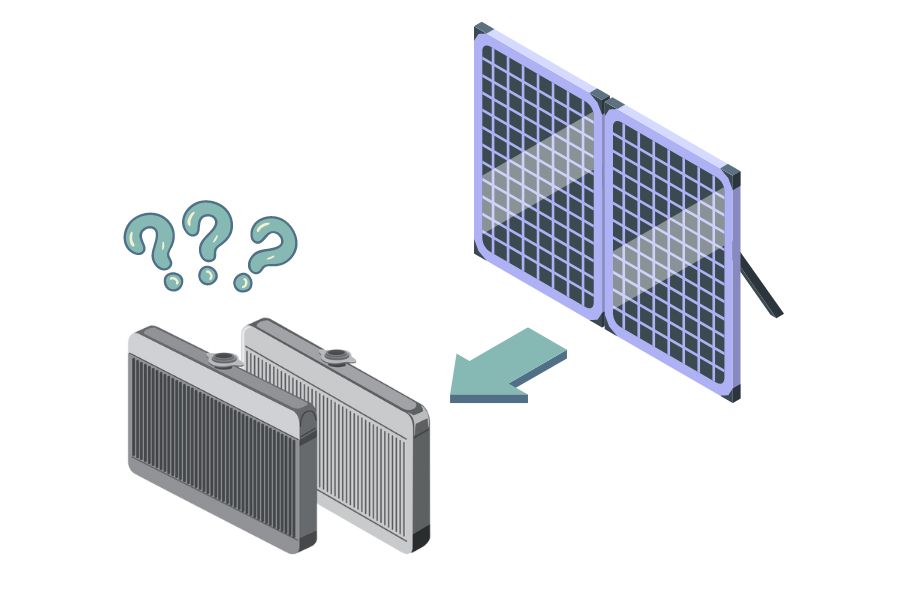
The number of electric radiators a solar PV system can support depends on a few key factors:
- the power output of the radiators
- the output of the solar PV system
- the location’s sunlight hours
- the efficiency of the system
But we recommend a 5kW solar array for a family of four.
Let’s consider an example using typical values in Ireland:
- Size of the radiator: Electric radiators vary, but a standard output size is around 1.5 kW (or 1500 Watts).
- Solar PV System Size: A typical residential solar PV system in Ireland might be around four kWp (kilowatt peak). It is the maximum output under ideal sunlight conditions.
- Sunlight Hours and Efficiency: Ireland averages about 3.6 sunlight hours per day annually. However, installed solar panels don’t continuously operate at maximum efficiency due to cloud cover, dust, and panel angle. A typical real-world efficiency might be around 75%.
So, let’s see how much energy your four kWp solar PV system could generate on an average day:
Multiply four kWp by 3.6 sunlight hours by 0.75 efficiencies (4*3.6*0.75) = 10.8 kWh (kilowatt hours)
And let’s see how much energy a 1.5 kW radiator would use if it ran for 6 hours a day:
1.5 kW * 6 hours = 9 kWh
This calculation means that your four kWp solar PV system could fully power one 1.5 kW radiator running for 6 hours on average, with some energy to spare. However, this is a rough estimate, and actual values may vary depending on specific conditions.
Also, remember that solar energy production would be less in winter due to shorter days and more cloud cover, while the need for heating might increase. Solar battery storage can store excess solar power to heat radiators when needed.
How Do You Heat Hot Water in an All-Electric House?
In an all-electric house, there are several standard methods for heating hot water, including electric water heaters, heat pump water heaters, tankless electric water heaters, and solar water heaters with electric backup. These systems utilize different technologies to ensure a reliable hot water supply for your needs.
Electric heating systems heat the water using electric resistance heating elements within a storage tank. These appliances efficiently convert electrical energy into heat, providing hot water for various household tasks.
Similarly, heat pump water heaters use a different approach, relying on a solar inverter that extracts heat from the surrounding air or ground to warm the water. This process is more energy-efficient compared to traditional electric water heaters.
Tankless electric water heaters, on the other hand, offer hot water on demand. These compact units heat the water as it flows through an electric heating element, eliminating the need for a storage tank. Tankless water heaters are known for their space-saving design and can be a suitable option for smaller properties or households with lower hot water demand.
Solar water heaters with electric backup systems are a viable choice for homeowners interested in harnessing renewable energy. Solar collectors capture solar energy, which helps heat the water.
In periods of low solar energy or increased demand, the electric backup system ensures a continuous hot water supply. This combination of solar and electric appliances allows for greater sustainability and reduced reliance on fossil fuels.
Conclusion
Solar panels have the potential to power radiator heating systems, providing a sustainable and green energy solution. In addition, they harness the power of the sun to generate electricity, which one can use to operate electric appliances such as radiators. Solar power allows homeowners to reduce their carbon footprint and contribute to a cleaner environment.
While the feasibility of using solar panels to heat radiators depends on various factors, reducing reliance on non-renewable energy sources is possible. Such factors include the size of the solar panel system, energy requirements of the heating system, and local climate conditions.
Solar panels, combined with an efficient solar inverter that converts the generated electricity into a usable form, can provide a reliable and clean energy source for electric appliances like radiators. This utilization of green energy promotes sustainability and reduces the environmental impact of traditional heating systems. For further guidelines on the usage of solar power for heating systems and available grants, the Sustainable Energy Authority of Ireland provides comprehensive resources.
By embracing solar panels for radiator heating, homeowners can benefit from long-term cost savings, energy independence, and reduced greenhouse gas emissions. It’s a step towards a greener future, where renewable energy sources play a crucial role in meeting our heating needs while minimizing environmental impact.
